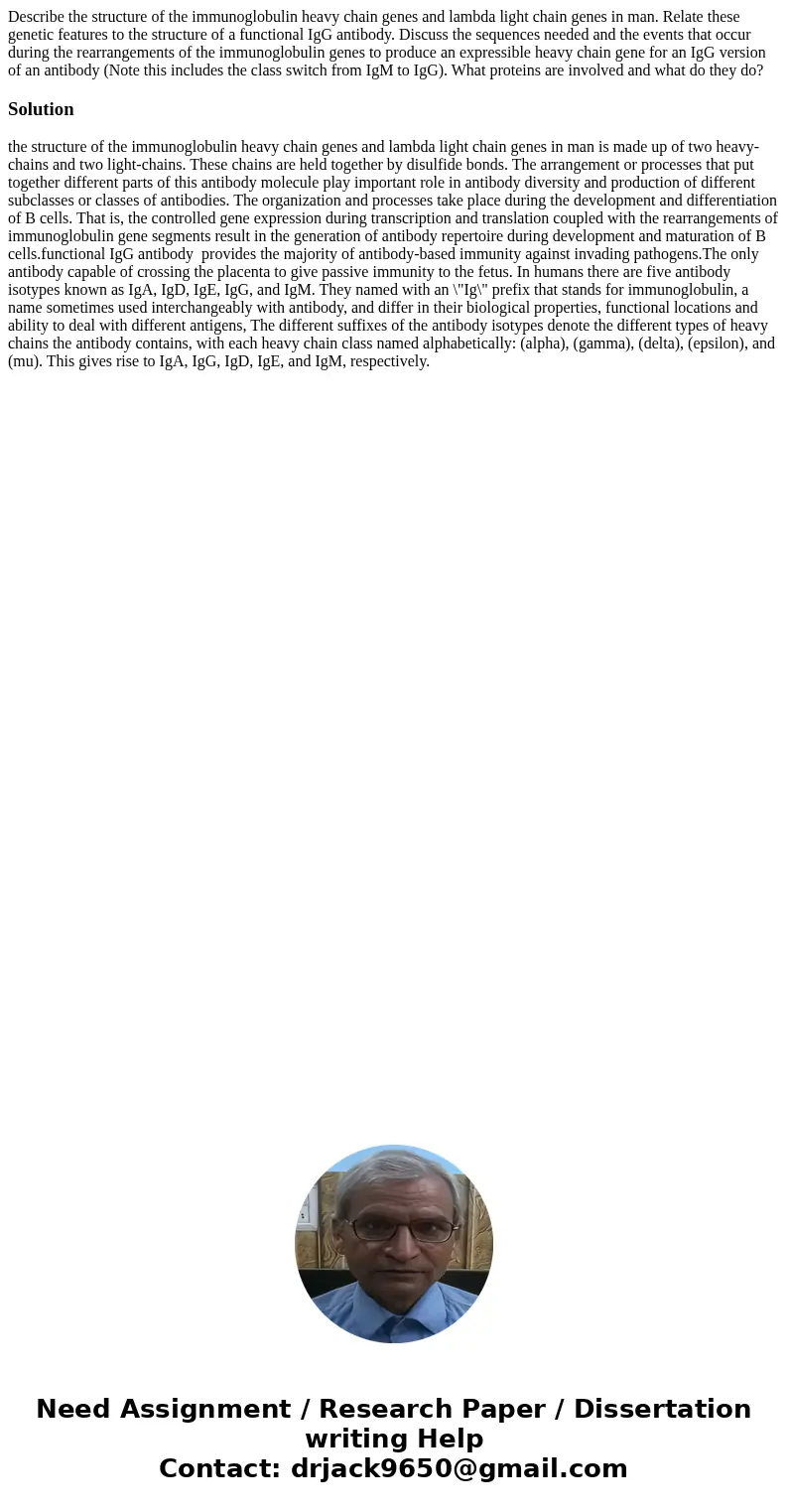Describe the structure of the immunoglobulin heavy chain gen
Describe the structure of the immunoglobulin heavy chain genes and lambda light chain genes in man. Relate these genetic features to the structure of a functional IgG antibody. Discuss the sequences needed and the events that occur during the rearrangements of the immunoglobulin genes to produce an expressible heavy chain gene for an IgG version of an antibody (Note this includes the class switch from IgM to IgG). What proteins are involved and what do they do?
Solution
the structure of the immunoglobulin heavy chain genes and lambda light chain genes in man is made up of two heavy-chains and two light-chains. These chains are held together by disulfide bonds. The arrangement or processes that put together different parts of this antibody molecule play important role in antibody diversity and production of different subclasses or classes of antibodies. The organization and processes take place during the development and differentiation of B cells. That is, the controlled gene expression during transcription and translation coupled with the rearrangements of immunoglobulin gene segments result in the generation of antibody repertoire during development and maturation of B cells.functional IgG antibody provides the majority of antibody-based immunity against invading pathogens.The only antibody capable of crossing the placenta to give passive immunity to the fetus. In humans there are five antibody isotypes known as IgA, IgD, IgE, IgG, and IgM. They named with an \"Ig\" prefix that stands for immunoglobulin, a name sometimes used interchangeably with antibody, and differ in their biological properties, functional locations and ability to deal with different antigens, The different suffixes of the antibody isotypes denote the different types of heavy chains the antibody contains, with each heavy chain class named alphabetically: (alpha), (gamma), (delta), (epsilon), and (mu). This gives rise to IgA, IgG, IgD, IgE, and IgM, respectively.

 Homework Sourse
Homework Sourse